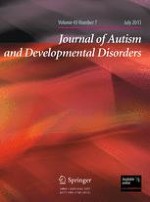01-07-2013 | Original Paper
Orienting in Response to Gaze and the Social Use of Gaze among Children with Autism Spectrum Disorder
Gepubliceerd in: Journal of Autism and Developmental Disorders | Uitgave 7/2013
Log in om toegang te krijgenAbstract
Potential relations between gaze cueing, social use of gaze, and ability to follow line of sight were examined in children with autism and typically developing peers. Children with autism (mean age = 10 years) demonstrated intact gaze cueing. However, they preferred to follow arrows instead of eyes to infer mental state, and showed decreased accuracy in following line of sight when several visual distracters were present. Performance across tasks was not correlated for either group. Findings suggest that children with autism are less inclined to prioritize and select eyes, particularly in visually-rich environments. Gaze-following deficits may lie at the level of selective attention, rather than cueing—a possibility that can be explored with more complex and ecologically valid tasks.
